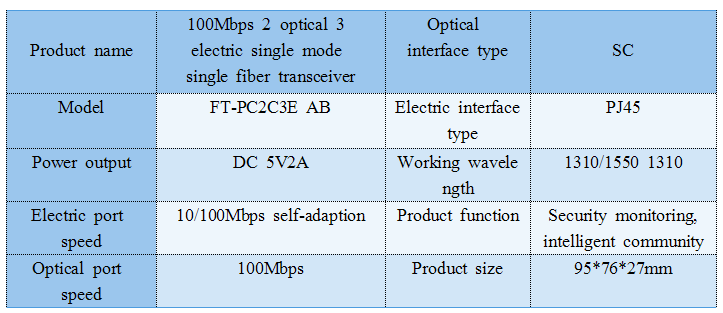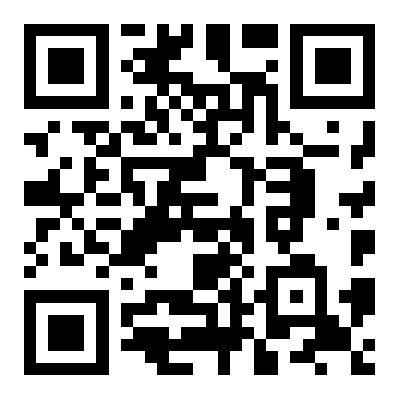Optical fiber transceiver is an Ethernet transmission media conversion unit that switches short distance twisted pair electrical signals and long distance optical signals, also known as photoelectric converter (Fiber Converter). It is mainly used in practical network environments where Ethernet cables cannot be covered and optical fiber must be used to extend the transmission distance. Such devices are often positioned at the access layer applications of WMAN, such as HD video image transmission in surveillance security engineering. In addition, fiber-optic transceivers also play a huge role in helping to connect the last kilometer of fiber-optic lines to the man and more outer networks.
Fiber optic transceiver:100Mbps 2 optical 3 electric

Optical fiber transceiver is an Ethernet transmission media conversion unit that switches short distance twisted pair electrical signals and long distance optical signals, also known as photoelectric converter (Fiber Converter). It is mainly used in practical network environments where Ethernet cables cannot be covered and optical fiber must be used to extend the transmission distance. Such devices are often positioned at the access layer applications of WMAN, such as HD video image transmission in surveillance security engineering. In addition, fiber-optic transceivers also play a huge role in helping to connect the last kilometer of fiber-optic lines to the man and more outer networks.
The composition of optical fiber transceiver mainly includes three basic functional modules: optical dielectric conversion chip, optical signal interface (optical transceiver integrated module) and electrical signal interface (RJ 45). If equipped with the network management function, the network management information processing unit is also included.
According to the nature of optical fiber, optical transceiver can be divided into single mode optical transceiver and multi-mode optical transceiver. Multi-mode fiber transceivers typically travel between 2 km and 5 km, while single-mode transceivers have a wider coverage, usually between 20 km and 120 km.
In addition, optical fiber transceivers have two types: double fiber and single fiber. The receiving and sending data of the double fiber fiber transceiver are transmitted on different optical fibers, while the single fiber equipment can save half of the optical fiber, that is, the data receiving and transmission is realized on a single optical fiber, which is very suitable where the optical fiber resources are tight.
In specific use, the optical fiber transceiver can be interconnected through the optical module, compared with the ordinary optical fiber transceiver, only in the optical port is different. This device has flexibility in terms of transmission rate, working distance, and fiber-optic network type, providing maximum convenience for fiber-to-copper Ethernet conversion applications.
Contact: Ms. Serena Shen
Phone: +86 18658259895
E-mail: sales@hwfiber.com
Whatsapp:+86 18658259895
Add: No. 28 Yinfu Road, Danxi Street, Xiangshan County, Ningbo City, Zhejiang
We chat
